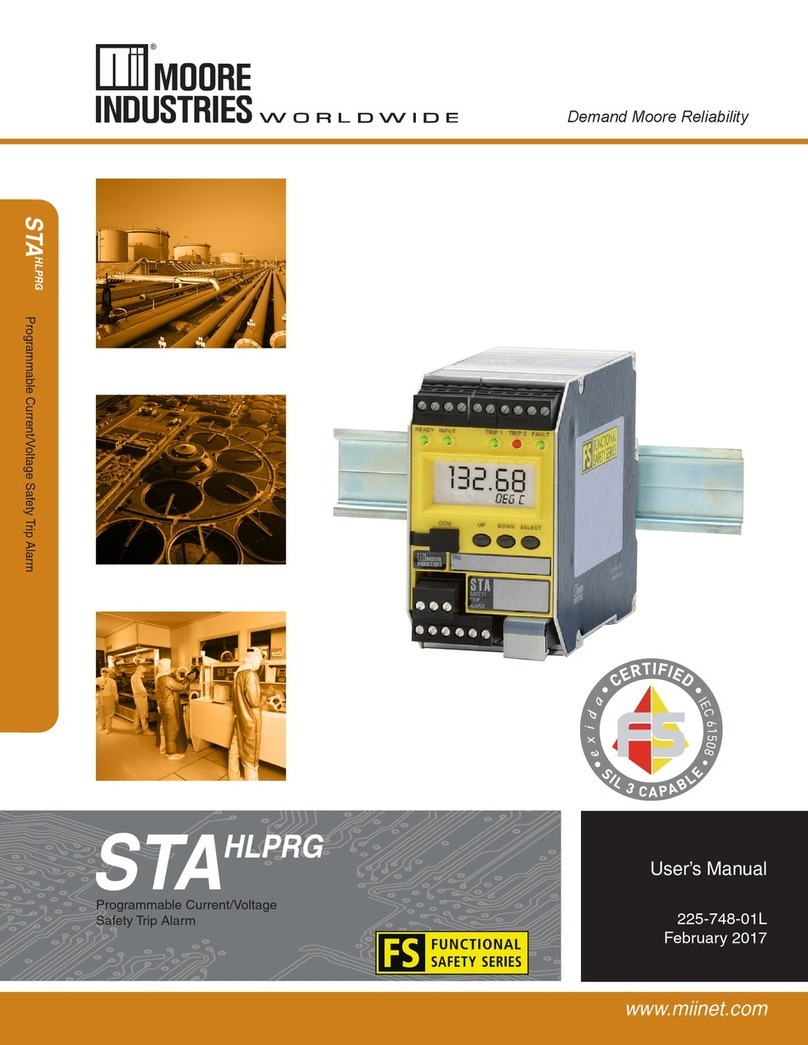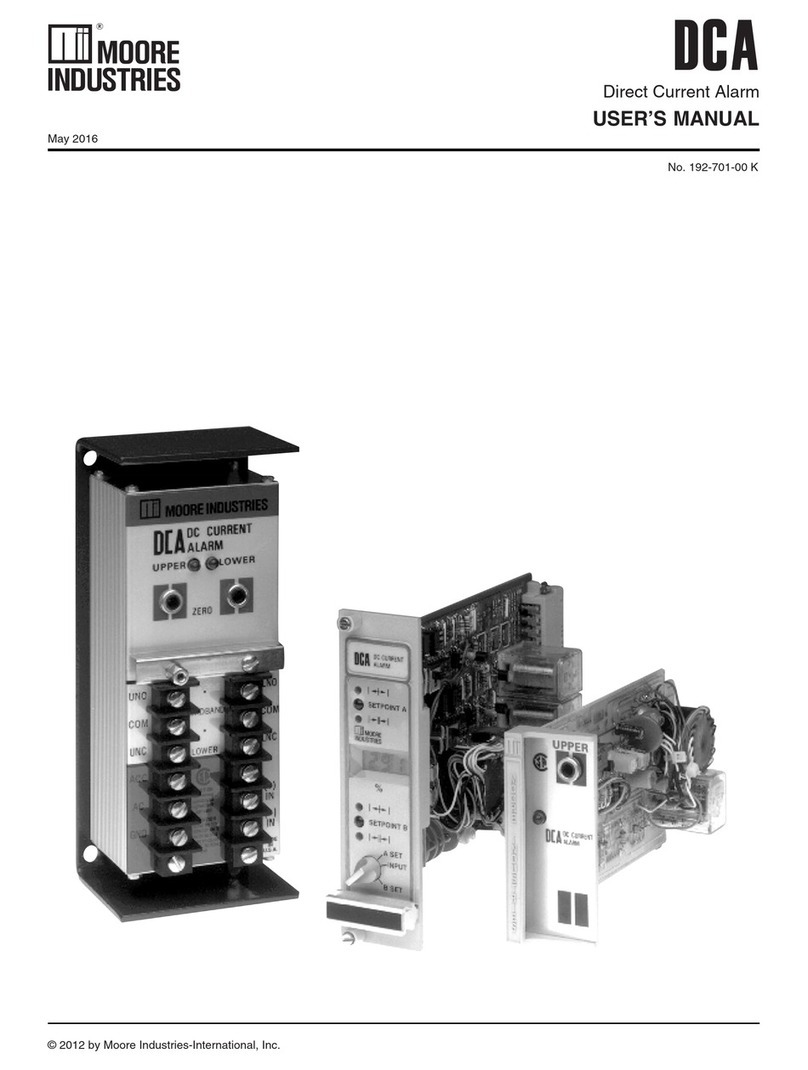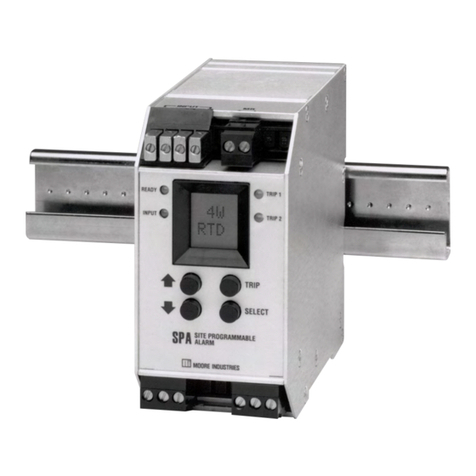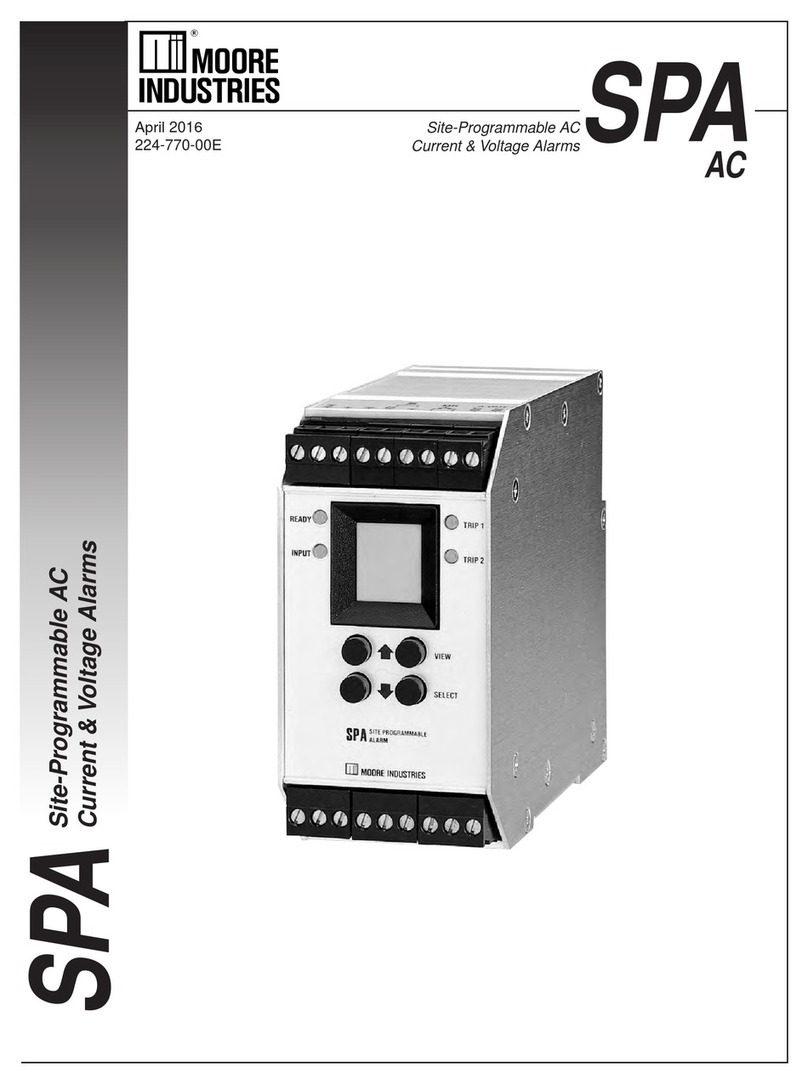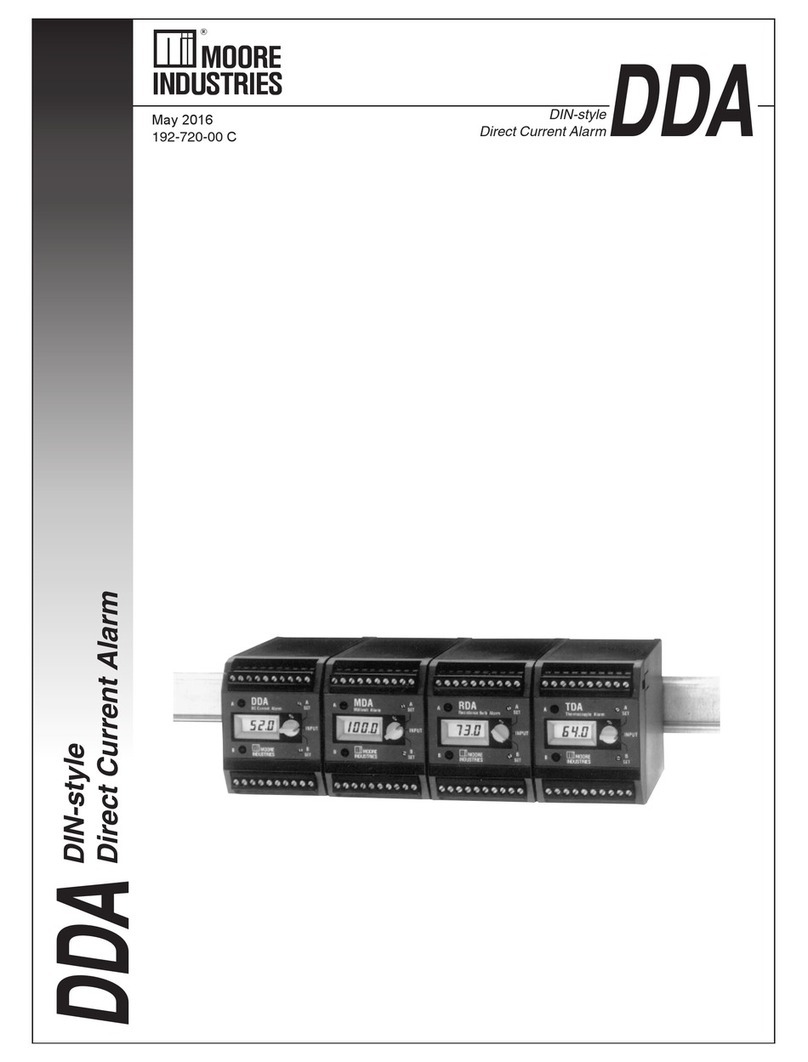
4 The Interface Solution Experts
CPA
PC-Programmable RTD, T/C, Ohms, mV
and Potentiometer Limit Alarm Trips
The CPA
The CPA (TPRG) is a PC-Programmable, user-
configurable alarm. The instrument includes two
alarm (relay) outputs and an optional analog output.
The alarms can be configured as trip or fault alarms.
Introduction
This is the users’ manual for the Moore Industries
CPA PC-Programmable Alarm (TPRG: RTD, T/C,
mV, Ohms and Potentiometer Limit Alarm Trips). It
contains all of the information needed to configure,
install, operate, and maintain this instrument.
About this Manual
Wherever you see a “Note”, “Caution”, or “WARNING
” pay particular attention.
WARNING - Hazardous procedure or condition that
could injure the operator.
Caution - Hazardous procedure or condition that could
damage or destroy the unit.
Note - Information that is helpful for a procedure,
condition, or operation of the unit.
Outputs
1PRG
This is a one relay output with a 5A@250Vac or
5A@24Vdc, 50/60Hz non-inductive contact rating. It
is available in a DPDT arrangement. All relay contacts
(NO, NC and COM) are available for use. No jumpers
are required.
2PRG
This is a two relay ouptut with a 5A@250Vac or
5A@24Vdc, 50/60Hz non-inductive contact rating.
The contact arrangement is SPDT. All relay contacts
(NO, NC and COM) are available for use. No jumpers
are required.
Options
Analog Output (-AO)
The analog output range of the CPA (TPRG) can
be voltage or current. The current output is a
configurable source or sink output. Four terminals
are provided to allow voltage/current and current sink/
source selection without the need for jumpers. The
output can be configured to narrower spans from the
PC Configuration program. The range of the current
output is 0–24mA. The range of the voltage output is
-0.5–11V.
RF Option (-RF)
An RF option is also available. This version provides
30V/m RFI/EMI immunity compared to our standard
model which offers 10V/m RFI/EMI immunity.
Figure 1. The CPA (TPRG)
Model and Serial Numbers
Moore Industries uses a system of model and serial
numbers to keep track of all of the information on
every unit it sells and services. If a problem occurs
with your CPA, check for a tag affixed to the unit
listing these numbers. Supply the Customer Support
representative with this information when calling.
Inputs
Refer to Table 3 of this manual for input ranges and
accuracies of the CPA (TPRG).
The CPA has a READY LED to indicate the health of
the unit, an INPUT LED to indicate the status of the
input and a dual color LED, per relay, to indicate alarm
status.
READY
INPUT
ALARM 1
ALARM 2
COMPUTER
PROGRAMMABLE
ALARM
COM


